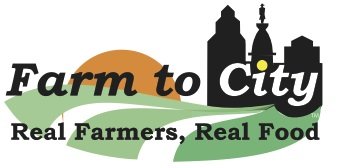By the Light of the Strawberry Moon
If you’ve been shopping at the local farmers’ markets for the last couple weeks, then this should come as no surprise: it is officially the season of the Strawberry Moon.
That name - that Strawberry Moon - has been used to describe this time of year for many centuries. It has its origins in the calendars and medicine wheels of the Native American tribes that lived on this continent and hunted, farmed and foraged in the local woodlands.
Native Americans did not use the kind of rigid calendars like we use today. Instead, they divided their months and year by the ever-changing phases of the moon. They gave each period of time from full moon to full moon its own name.
Many of these names were chosen based on the typical behavior of the plants, animals, or weather during that period of time. That’s why you’ll see on their charts and calendars such names as the Frogs Return Moon or the Ducks Fly Moon or the Long Snow Moon of late December.
But - and this is why we think of these indigenous calendars when we shop at the farmers’ market throughout the year - a few of these names indicated a certain task that was best completed between those full moons. That’s why these native zodiacs sometimes sound like a farmers’ seasonal to-do list: the Corn Planting Moon, the Harvest Moon, or the Sugar Moon of March when the maple sap runs.
And then there’s this current moon, surely one of our favorites.
This is the time of year when the seasonal farmers’ markets - like Ambler & Swarthmore on Saturday, The Fountain on Wednesday, and more - re-open for the year, and the year-round markets finally burst back into color, last full moon of spring, when we all go back to eating fresh local fruit...by the light of the Strawberry Moon.
Is This Really a Thing?
Here at Farm to City we were curious if these names of the moons still played a part in modern agriculture. We wanted to know if it was something that farmers used when planning their own seasonal to-do lists.
Do they also think of the old legends of the moon as they watch their crops grow and ripen in the fields?
“I hate to disappoint you,” Alex from The Potato Homestead wrote in her reply to our text message, “but we don’t pay attention to the moon for farming purposes.”
And then she sent another message right away: “We do look and skygaze every night just for fun.”
“Older farmers definitely like to talk about it,” wrote Katelyn Melvin from Tooth of the Lion Apothecary Farm. “Like, for instance, they’ll say that the tomatoes always go crazy during that first full moon in August.”
Katelyn then mentioned that farming by the moon might be utilized by farmers practicing biodynamics, a holistic approach to agriculture.
“I don’t use the moon for our planting schedule,” Katelyn wrote back a few minutes later, “but I do notice it in conjunction with our crops, just like noticing rainfall, timing of tree bloom around the fields, insect timing, or bird migrations.”
We sent a few more messages to other farmers that we knew from the markets but they all kind of confirmed the same thing: going by the moon wasn’t a reliable way to produce, and not the best way to make a living.
Later on that evening, Gina Humphreys of Urban Girls Produce, nine hours after the initial question, confirmed that even though it was used differently now the moon and its phases were still an undeniable part of agriculture.
“If you try to pull weeds at the wrong time of the moon,” she texted, “it’s like pulling teeth. Everything is easier if done by the moon.”
Living the Seasonal Calendar
The best part about learning the Native American names for the moon is when you can observe that kind of calendar still flourishing, still surviving, in this modern electro-industrial age. The names may have changed but the seasonal patterns remain the same.
It’s still blackberry and raspberry season during the Ripe Berries Moon. Those first few weeks of September, when everything seems to be in season, peaches next to pears at the market, that’s always going to be the biggest Harvest Moon of them all.
The killing frost always comes sometime between the middle of November and the middle of December, the Freeze Up Moon. Every spring from April to May, the street trees light up Philadelphia with their blossoms, same old Budding Trees Moon of the past.
“Live in each season as it passes,” to quote Thoreau, “breathe the air, drink the drink, taste the fruit.”
At this time of year, we recommend that fruit be local strawberries found at producer-only farmers’ markets. Enjoy the harvest at one of these local farmers’ markets.






